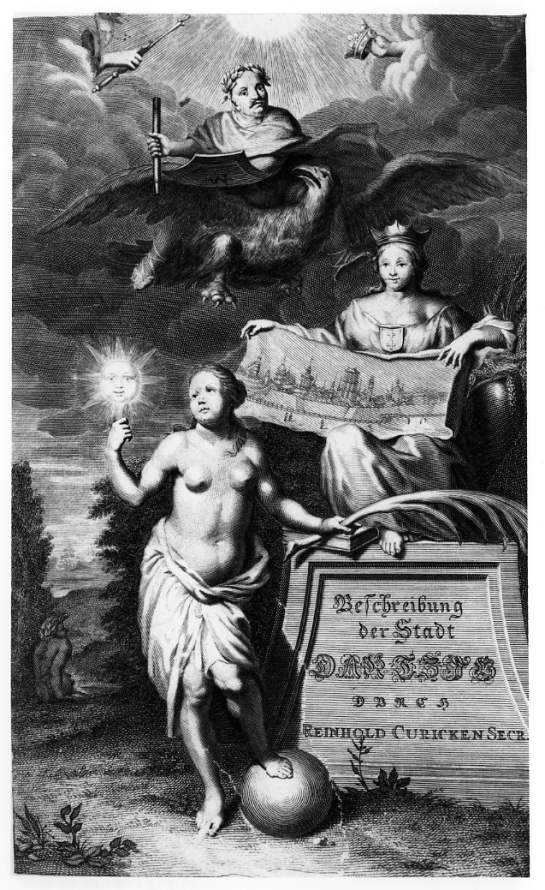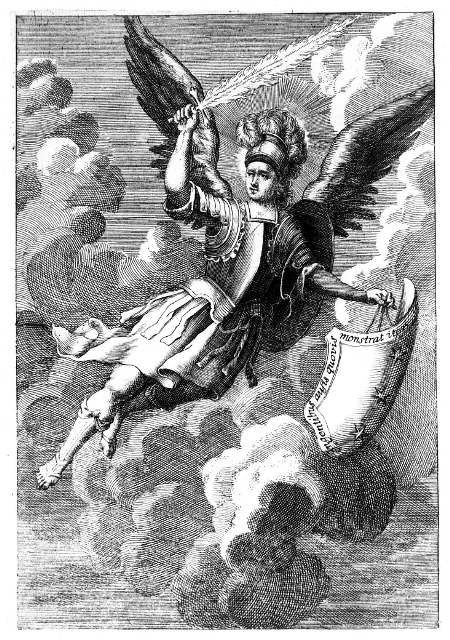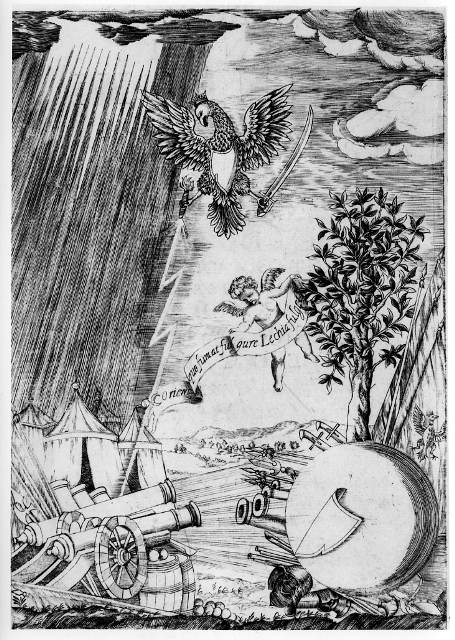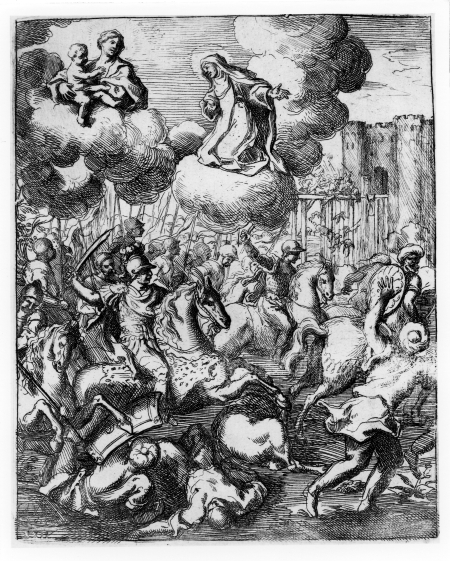Apotheosis of Jan III Sobieski as a Roman Caesar
As early as in 1654 Jan Sobieski’s life and activity connected him with Gdańsk and Pomerania. Having become the reigning monarch, he visited Gdańsk a number of times and dedicated his genuine interest, time and funds to the prosperous city on the Motława River. He is remembered by inhabitants of Gdańsk as a generous benefactor and patron who took care and financially supported astronomer Johannes Hevelius and constructor Bartłomiej Ranisch, to name but two.
It is therefore not at all surprising that in his publication Der Stadt Dantzig historische Beschreibung (Amsterdam und Dantzig 1688), released in the king’s lifetime, Reinhold Curicke included Jan Sobieski, the favourable patron of Gdańsk. The printed title page of the book was preceded by an unsigned print (copperplate engraving and etching) of a high artistic level, functioning in fact as the second fully printed title page. The earthly sphere of the print depicts two female allegories, a standing Veritas (Truth) holding the sun and a palm, and a sitting personification of Gdańsk holding a paper scroll featuring the city panorama. Hovering above them on an eagle like divine Jupiter there is Jan III wearing a laurel wreath, antique-like sandals and a cloak, holding a baton and a shield with a monogrammed I3. The eagle, also referred to as “a heavenly bird” and an attribute of Jupiter, was considered the king of birds and the bird of kings. Therefore, Sobieski’s apotheosis clearly alludes to apotheoses of Roman emperors, soaring up to the sky on eagles. Above the hero’s head billowing clouds part revealing light, from which two hands emerge holding a sceptre and an open crown.
Neither the author of the fine print nor the author of its drawn (or painted) prototype are known. All we know is that the majority of the 52 plate prints illustrating Curicke’s publication (dedicated to the mayor and councillors of Gdańsk) were created based on drawings by Piotr Willer and Andrzej Stech. Still open is the question of the prints manufacturers, i.e. whether they were local Gdańsk or Dutch artists, or both.



